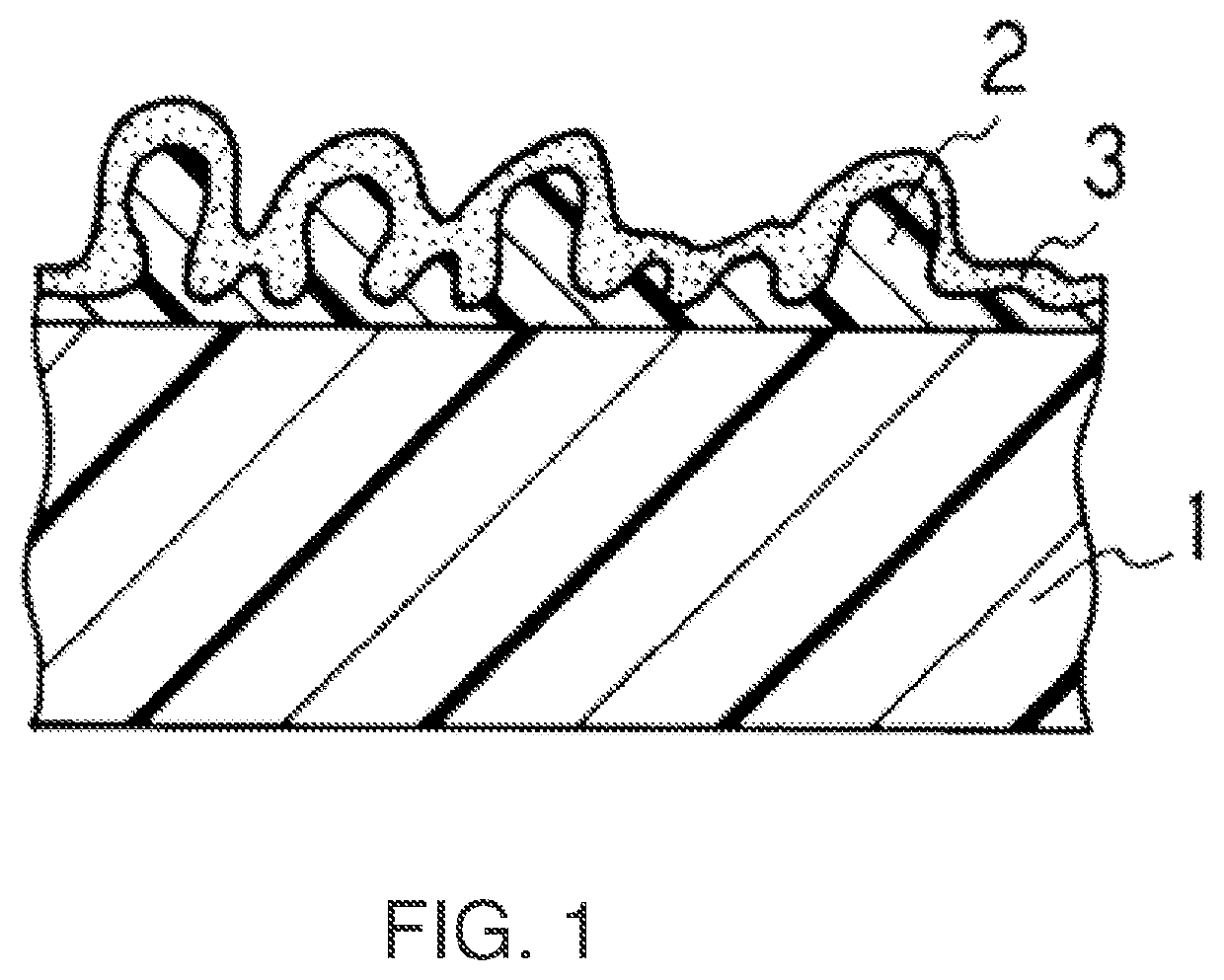Reverse Osmosis Membrane with Hydrogel Coating
a reverse osmosis membrane and hydrogel technology, applied in membrane technology, membrane technology, chemistry apparatus and processes, etc., can solve the problems of reduced water permeation rate, loss of productivity in reverse osmosis operations, and build-up of sludge-like surface deposits on membranes, so as to improve the resistance to fouling
- Summary
- Abstract
- Description
- Claims
- Application Information
AI Technical Summary
Benefits of technology
Problems solved by technology
Method used
Image
Examples
example a
[0041]A membrane of the same source (pilot plant machine), but without the polyvinyl alcohol coating, was coated with a solution containing polyvinylpyrrolidone at a concentration of 3 wt % weight percent of PVP, average molecular weight 1,300,000 as determined by light scattering), and DAS in a 50-1 ratio by weight. The coated membrane was dried, then irradiated with UV light for 3 seconds. In reverse osmosis testing, this membrane exhibited a flux of 1.40 m3 / m2-day and 99.5% salt rejection.
examples b1 and b2
[0042]Membranes of the same source (pilot plant machine), but without the polyvinyl alcohol coating, were coated in duplicate with a solution containing 3.5 wt % polyvinylpyrrolidone copolymer with dimethylaminoethyl methacrylate (PVP-DMM) (Sigma-Aldrich, molecular weight 1,000,000) and DAS in a 50-1 ratio by weight in the case of Example B1, and in a 100-1 ratio for Example B2. The coated membranes were dried, then irradiated with UV light for 3 seconds. In reverse osmosis testing, membrane B1 exhibited a flux of 1.28 m3 / m2-day and 99.5% salt rejection. Membrane B2 exhibited a flux of 1.45 m3 / m2-day and 99.5% salt rejection.
PUM
| Property | Measurement | Unit |
|---|---|---|
| feed pressure | aaaaa | aaaaa |
| weight percent | aaaaa | aaaaa |
| weight percent | aaaaa | aaaaa |
Abstract
Description
Claims
Application Information
 Login to View More
Login to View More - R&D Engineer
- R&D Manager
- IP Professional
- Industry Leading Data Capabilities
- Powerful AI technology
- Patent DNA Extraction
Browse by: Latest US Patents, China's latest patents, Technical Efficacy Thesaurus, Application Domain, Technology Topic, Popular Technical Reports.
© 2024 PatSnap. All rights reserved.Legal|Privacy policy|Modern Slavery Act Transparency Statement|Sitemap|About US| Contact US: help@patsnap.com








